Chamby Canal National Historic Site of Canada Management Plan
Chambly Canal National Historic Site
Table of contents
- Foreword
- Recommendations
- Executive Summary
- 1.0 Introduction
- 2.0 Significance of Chambly Canal National Historic Site
- 3.0 Planning Context
- 4.0 Vision
- 5.0 Key Strategies
- 6.0 Area management approach for the Fort-Sainte-Thérèse National Historic Site./a>
- 7.0 Summary of Strategic Environmental Assessment
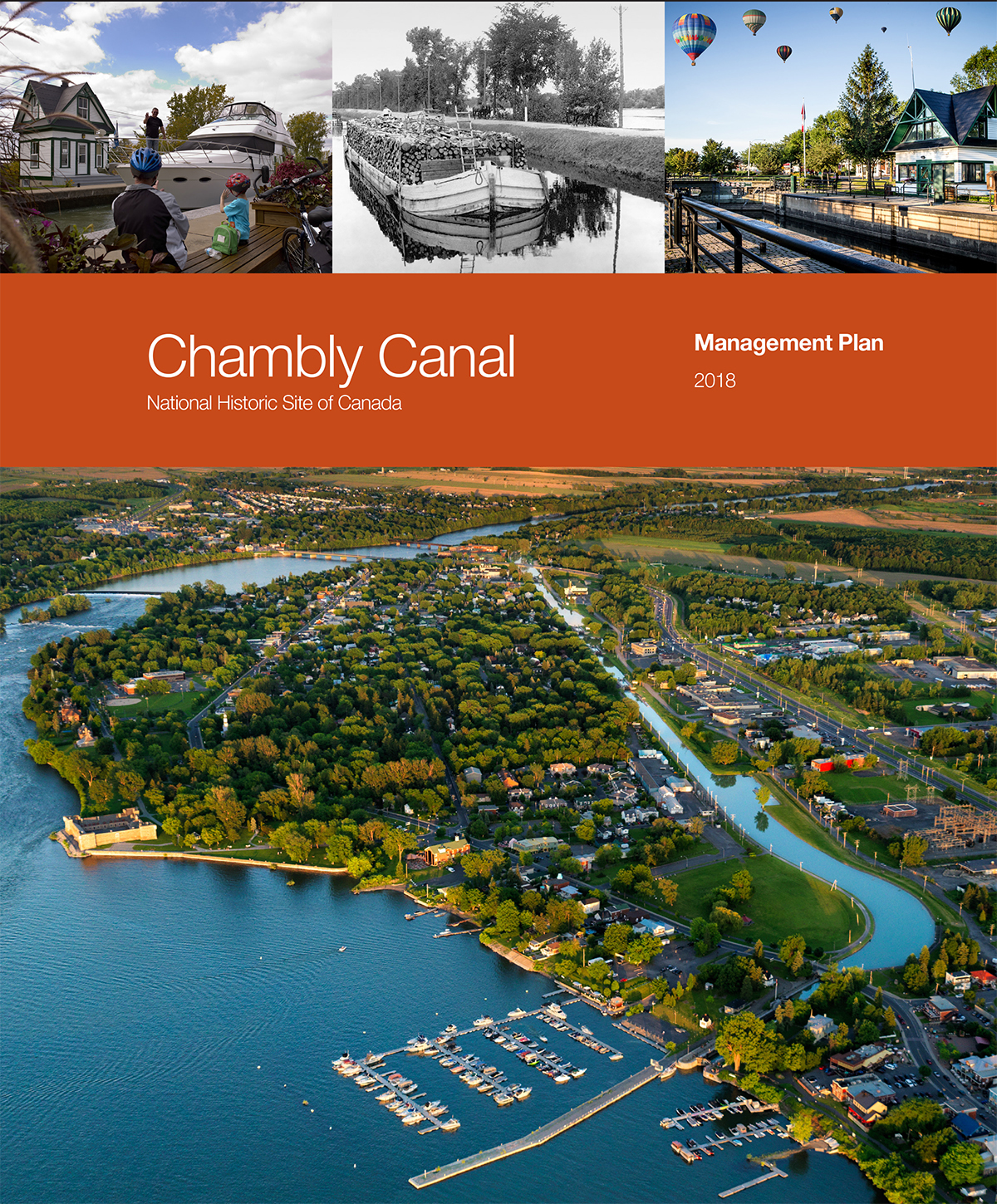
© Her Majesty the Queen in Right of Canada, represented by the Chief Executive Officer of Parks Canada, 2018.
Cette publication est aussi disponible en français.
Papier :
- R64-105/9-2018E
- 978-0-660-24770-0
PDF :
- R64-105/9-2018E-PDF
- 978-0-660-24769-4
Issued also in French under the title:
Plan directeur lieu historique national du Canada du Canal-de-Chambly, 2018
For more information about the management plan or about Chambly Canal National Historic Site of Canada
1899, boul. de Périgny
Chambly, (Quebec)
Canada
J3L 4N
Front Cover Image Credits
- Top from left to right: Parks Canada and National Archives of Canada,C-060786
- Bottom: Parks Canada
Foreword

Canada’s national parks, national historic sites and national marine conservation areas belong to all Canadians and offer truly Canadian experiences.
These special places make up one of the finest and most extensive systems of protected natural and cultural heritage areas in the world.
The Government is committed to preserving our natural and cultural heritage, expanding the system of protected places and contributing to the recovery of species-at-risk. At the same time, we must continue to offer new and innovative visitor and outreach programs and activities so that more Canadians can experience Parks Canada places and learn about our environment, history and culture.
This new management plan for Chambly Canal National Historic Site of Canada supports this vision.
Management plans are developed through extensive consultation and input from various people and organizations, including Indigenous Peoples, local and regional residents, visitors and the dedicated team at Parks Canada.
National parks, national historic sites and national marine conservation areas are a priority for the Government of Canada. I would like to thank everyone who contributed to this plan for their commitment and spirit of co-operation.
As the Minister responsible for Parks Canada, I applaud this collaborative effort and I am pleased to approve the Chambly Canal National Historic Site of Canada Management Plan.
Recommendations
Recommended by:
Michael Nadler
Acting Chief Executive Officer
Parks Canada
Trevor Swerdfager
Senior Vice-President, Operations
Parks Canada
Lauren Small
Director
Quebec Waterways Unit
Parks Canada
Executive Summary
Located in the heart of the Montérégie area on the South shore of Montreal, the Chambly Canal National Historic Site was designated to be of national historic significance in 1929. Opened to navigation in 1843, this engineering infrastructure not only allowed commercial barges to bypass the Richelieu River rapids, it also significantly contributed to the development and the economic growth of adjacent municipalities.
Today, the commercial barges have been replaced by recreational boaters, and the old towpath has been converted into a multi-use path that attracts more than 250,000 visitors and cyclists annually, making the Chambly Canal an important recreational tourism destination. The diversity of the site's historic components, such as the locks, including some that are still operated manually, as well as the archaeological remains of Fort-Sainte-Thérèse, a distinct national historic site, contribute to the richness and the identity of the Chambly Canal National Historic Site, one of the five (5) historic canals managed by Parks Canada in Quebec.
Since 2015, significant investments have been made to improve the condition of the infrastructure and buildings of the Chambly Canal and maintain its physical integrity. These investments, representing approximately $50 million, are scheduled to continue until 2020.
This Management plan replaces the 2007 plan and introduces the proposed vision for the site for the next ten years. While a number of the 2007 plan’s objectives have been accomplished, including identifying the location of Fort-Sainte-Thérèse, others are in the process of being carried out, such as the completion of significant rehabilitation work on the canal infrastructure and the proposal of a management strategy for all non-functional heritage bridges.
The vision for the Chambly Canal National Historic Site is to promote its heritage and landscape, improve the visitor experience and increase the community’s sense of ownership and pride in the site. The development of Fort-Sainte-Thérèse as a distinct attraction along the Chambly Canal is also part of the proposed vision. Three (3) key strategies support the vision for management of the site over the next 10 years:
Strategy 1:
The Chambly Canal: Preserve and enhance its heritage and its cultural and natural landscape
The goal of this strategy is to protect and promote, for the benefit of current and future generations, the built heritage, the surrounding environment and the cultural and natural landscapes of the Chambly Canal. This strategy is intended to ensure that the condition of the site’s historical components and the effort dedicated to their preservation reflect the importance of this engineering work. Two objectives support this strategy:
Objective 1.1:
The condition and integrity of the Canal's historic infrastructure are improved;
Objective 1.2:
The centres, sectors, cultural and natural landscapes of the Chambly Canal are further recognized and showcased.
Strategy 2:
An improved and diversified visitor experience from one end of the canal to the other
This strategy is intended to improve the services and activities offered in order to enhance the visitor and recreational boater experience along the Chambly Canal. The improvement of visitor experience will be supported by the communities surrounding the canal and will result in an enhanced distribution of services, experiences and activities, to better meet the expectations of different clienteles and users. The objectives are the following:
Objective 2.1:
The service offer is better adapted to the needs of visitors and recreational boaters and better distributed according to the travel
Objective 2.2:
New development plans, carried out in partnership with the adjacent municipalities, contribute to improving the attractiveness of the Chambly Canal
Objective 2.3:
The renewal of programs and activities enhance visitor experience.
Strategy 3:
A source of pride and benefits for the community
Community pride in the Chambly Canal will contribute to its appreciation, while increasing a sense of belonging and interest in contributing to the site. The implementation of a strategy focused on partnerships, agreements and business opportunities with partners will enhance the site’s performance in terms of visitor experience, increase visitor loyalty and generate a positive impact on the surrounding communities. The following objective supports this strategy:
Objective 3.1:
The importance of the Chambly Canal is reflected in the level of commitment and ownership of the site by the local community
The management plan suggests a targeted management approach for the Fort-Sainte-Thérèse National Historic Site. The recent discovery of the location of the archaeological remains of Fort-Sainte-Thérèse, on Fryer Island, requires the establishment of management guidelines to ensure its conservation and development for years to come. With the untapped potential of Fort-Sainte- Thérèse, the following objectives are put forward:
- Recognize and promote the national historic value of the site
- Protect and enhance Fryer Island’s exceptional natural setting
- Make Fort-Sainte-Thérèse National Historic Site noticeable and accessible along the course of the Chambly Canal
- Commemorate the history of the site through new interpretive activities.
1.0 Introduction
Parks Canada manages one of the finest and most extensive systems of protected natural and historic places in the world. The Agency’s mandate is to protect and present these places for the benefit and enjoyment of current and future generations. Future-oriented, strategic management of each national park, national marine conservation area, heritage canal and those national historic sites administered by Parks Canada supports the Agency’s vision:
Canada’s treasured natural and historic places will be a living legacy, connecting hearts and minds to a stronger, deeper understanding of the very essence of Canada.
The Parks Canada Agency Act requires Parks Canada to prepare a management plan for national historic sites administered by the Agency. The Management Plan for the Chambly Canal National Historic Site of Canada, once approved by the Minister responsible for Parks Canada and tabled in Parliament, ensures Parks Canada’s accountability to Canadians, outlining how historic site management will achieve measurable results in support of the Agency’s mandate.
Canadians, partners in the community as well as different stakeholders were involved in the preparation of the new management plan, helping to shape the future direction of the national historic site. The plan sets clear, strategic direction for the management and operation of Chambly Canal National Historic Site by articulating a vision, key strategies and objectives. Parks Canada will report annually on progress toward achieving the plan objectives and will review the plan every ten years or sooner if required.
This plan is not an end in and of itself. Parks Canada will maintain an open dialogue on the implementation of the management plan, to ensure that it remains relevant and meaningful. The plan will serve as the focus for ongoing engagement on the management of the Chambly Canal National Historic Site in the years to come.
This management plan also includes the Fort-Sainte-Thérèse National Historic Site, located on Fryer Island, within the limits of the Chambly Canal National Historic Site. Considering its historical importance and distinct context for its designation, Fort-Sainte-Thérèse is subject to an area management approach, where particular objectives and targets are proposed.
Map 1 : Regional context

Map 2 : Chambly Canal National Historic Site
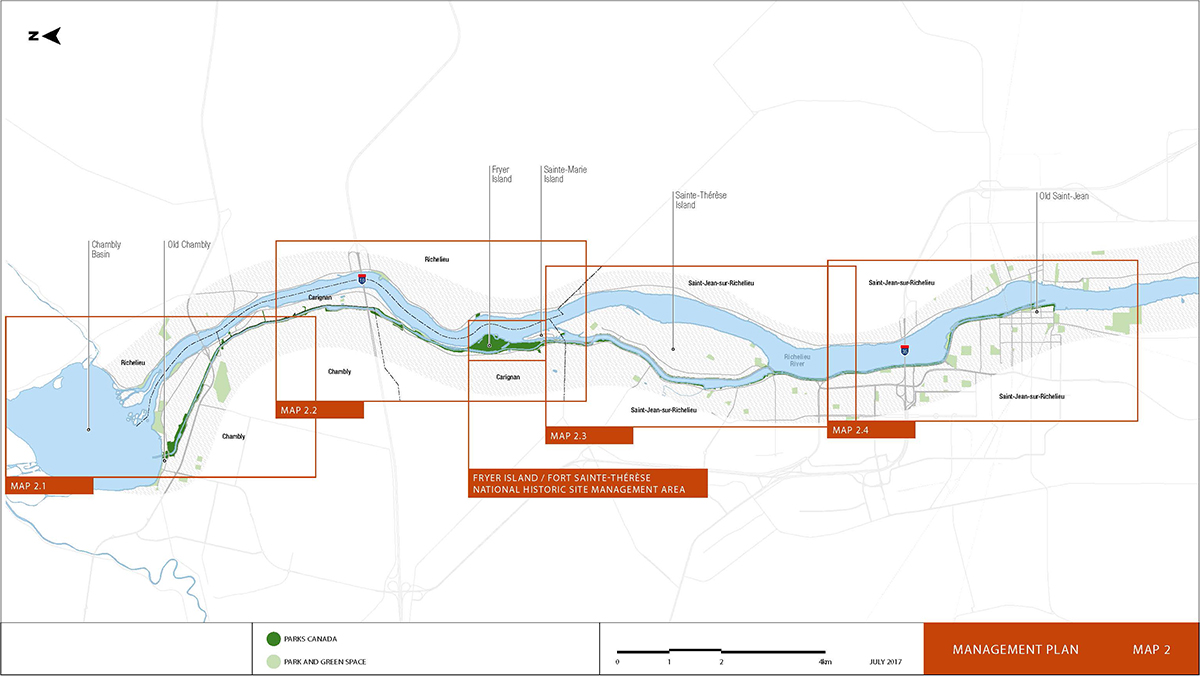
Map 2.1 : Chambly Canal National Historic Site
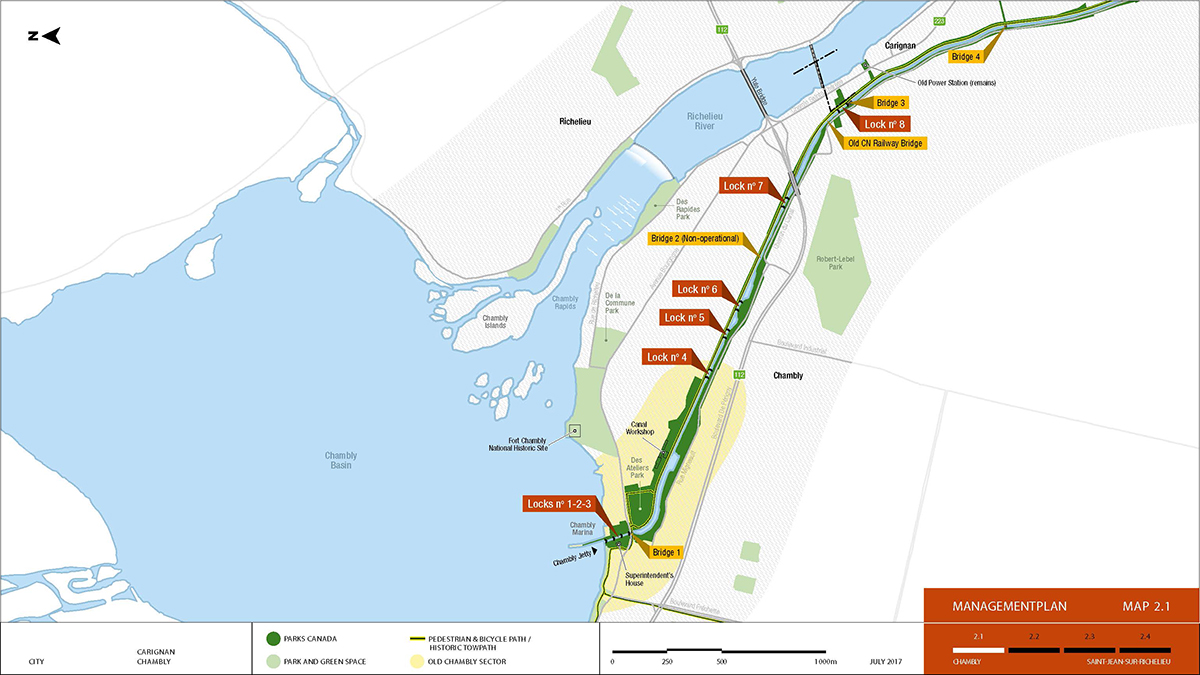
Map 2.2 : Chambly Canal National Historic Site
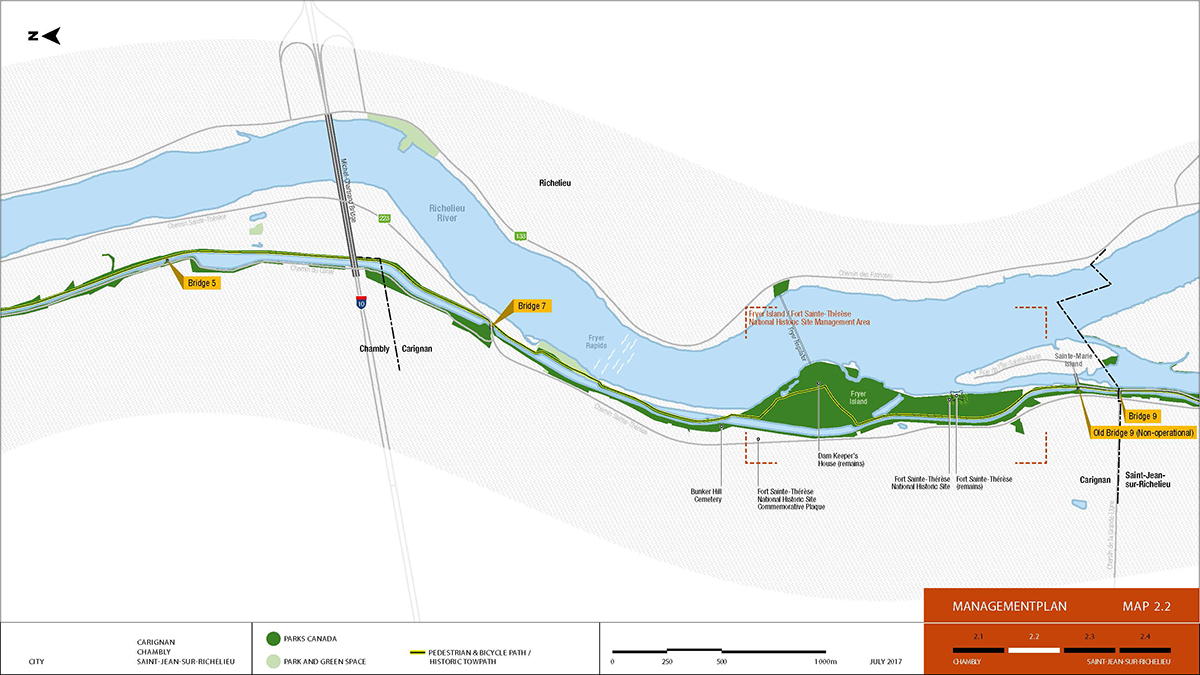
Map 2.3 : Chambly Canal National Historic Site

Map 2.4 : Chambly Canal National Historic Site

2.0 Significance of the Chambly Canal National Historic Site
The Chambly Canal is a national historic site located in the heart of the Montérégie region, connecting the towns of Chambly and Saint-Jean-sur-Richelieu and passing through the towns of Carignan and Richelieu. The site consists of a waterway of approximately twenty kilometres in length, with nine locks that allow boats to bypass the Richelieu River rapids, while encountering a twenty-four metres (24 m) elevation difference. Today, the towpath, formerly used by horses hauling commercial barges along the canal, is a multi-use path that is greatly appreciated by cyclists and pedestrians. The canal path is also part of the national and local cycle network, including the Canadian Great Trail and Quebec’s Route Verte.
The Chambly Canal was designated a site of national historic significance in 1929 for its role in the Canadian network of canals, namely in the navigation and trade network of the Richelieu-Champlain-Hudson corridor. The canal also contributed to the economic growth of the town of Chambly and specifically to that of Saint-Jean-sur-Richelieu, which was a hub of marine, road and rail transport in the 19th century.
Some historical components of the canal and its landscape, still present today, attest to the canal’s commercial use in the 19th and 20th centuries, as well as the evolution of the engineering materials and techniques associated with its construction and maintenance. The Chambly Canal still operates certain locks manually, as in the past. The site also consists of a diversity of cultural resources that contribute to its identity, including: the downstream and upstream jetties, the Superintendent's House in Chambly, the historic lock station cabins, the Woodworking Shop, the bridges (functional and non-functional) and the archaeological remains of Fort-Sainte-Thérèse.
The canal holds an important place among the recreational and tourist destinations of the Montérégie area. In 2016, over 250,000 people and 1,500 recreational vessels visited the site. Crossing through urban and agricultural landscapes, the diversity of the cultural and natural environments of the canal contributes to its identity and enhances the visitor experience. Interestingly, the Fort-Sainte-Thérèse National Historic Site,on Fryer Island, is located within the boundaries of the Chambly Canal National Historic Site. Designated as a site of national historic significance in 1923 by the Historic Sites and Monuments Board of Canada (HSMBC) for its role in the supply network and the defence infrastructure of Canada during the French colonial era, it was only in 2008-2009, during archaeological excavations, that the exact location of Fort-Sainte-Thérèse was discovered.
3.0 Planning Context
The current plan replaces the 2007 Chambly Canal National Historic Site Management Plan, which suggested a variety of strategies to achieve goals related to the conservation and enhancement of the landscape, the cultural and natural resources, transmission of commemorative integrity messages and heritage values, number of visits, facilities, partnerships and revenue generation. While some of the strategies identified in the plan were implemented, including finding the location of the Fort-Sainte-Thérèse National Historic Site, others are in the process of being implemented, such as the significant rehabilitation work on buildings and engineering structures and the establishment of a management strategy for the non-functional heritage bridges.
As a site open to surrounding communities, the Chambly Canal’s situation sets it apart from other national historic sites of the Parks Canada network. . Because the canal crosses the boundaries of different municipalities with distinct characteristics and development visions, management and maintenance of its integrity present a challenge
In recent years, the clientele visiting the Chambly Canal has changed. Today, while recreational boaters are older, they are stable in number, whereas the visitor clientele on the banks is more diversified. In addition, visitor and boater expectations are higher, particularly with respect to the provision of services: they now seek Wi-Fi access, overnight mooring with services, light food service options and art facilities.
The recent discovery of Fort-Sainte-Thérèse on Fryer Island requires the establishment of management guidelines for the coming years, to ensure its conservation and enhancement. It is important to mention that, through its involvement in the guardianship of the fort’s remains in recent years, the local community has shown a great sense of belonging to this site.
Since 2015, significant investments have been made to improve the condition of the Chambly Canal’s infrastructure and buildings and maintain its physical integrity. These investments, representing approximately $50 million, are scheduled to continue until 2020. Parks Canada will ensure that the canal’s infrastructure meets the requirements for public safety (management of water and dams) and will work with the relevant authorities to plan emergency measures.
The continuing transformation of the Chambly Canal environment is leading Parks Canada to consider the means and strategies that will encourage a collaborative management approach for the historic site. The 10-year Management Plan review process represents an opportunity to address these priorities and strengthen the participation of the local community and stakeholders.
4.0 Vision
The vision below expresses the desired state for the Chambly Canal National Historic Site for the coming years, from now to 2030.
The waterways managed by Parks Canada were once vital links for transportation and economic activity in Canada. Today, they continue to perpetuate this tradition in many Canadian communities by contributing to their socio-economic development. Parks Canada will work in partnership with others to transform the canals, both the water and the land, into world-class sites, vibrant and animated, fostering recreation, tourism and economic development, while preserving the natural, historic and cultural environment for future generations.
As a must-see recreational, tourist and heritage destination of the greater Montreal area, the Chambly Canal National Historic Site’s reputation is well established. In harmony with adjacent communities, the Chambly Canal receives large numbers of visitors and boaters. Through its diversity of services and signature activities, the Chambly Canal stands out and offers a multitude of experiences throughout the year.
The Chambly Canal’s identity stands apart because of its diverse landscapes and its still-present historic features. Pedestrians, cyclists and boaters, delighted with the quality of the facilities and amenities offered, are encouraged to extend their visits and to return. The canal’s engineering structures are attentively showcased and promote the national historic significance of the Chambly Canal within the Richelieu River region and of Canada’s Historic Canals network.
Due to a better access and development of the site, the Fort-Sainte-Thérèse National Historic Site is a distinct attraction along the Chambly Canal. Benefiting from amenities and activities that respect and enhance the exceptional natural setting of Fryer Island, the history of Fort-Sainte-Thérèse is recognized and appreciated by visitors.
As a welcoming destination for visitors, the Chambly Canal is an established feature of the region, as well as a lever of socio-economic development for local communities. The active participation of businesses, organizations, partners and volunteers makes it possible to offer diversified and quality programs and services. The appreciation and ownership of, and pride in the Chambly Canal National Historic Site reflect its significant place in the community.
5.0 Key Strategies
The suggested approach for the implementation of the vision for the Chambly Canal National Historic Site over the coming years is based on the following priorities: to preserve and enhance the heritage, cultural and natural environments and landscape of the canal; to promote an improved and diversified visitor experience throughout the canal; and finally, to be a source of pride and of added value to the community.
The three key strategies outlined below will guide the management of the site over the next ten years. Specific objectives and targets are associated with each key strategy in order to measure progress on their achievement over the coming years.
Key strategy No.1:
The Chambly Canal: Preserve and enhance its heritage and its cultural and natural landscape
The goal of this strategy is to protect and promote, for the benefit of present and future generations, the built heritage, surroundings and cultural and natural landscapes of the Chambly Canal. This strategy is intended to ensure that the condition of its historical elements as well as the efforts dedicated to their preservation reflect the importance of this engineering work. The implementation of distinctive development plans will promote the characteristic features of the canal and will contribute to the prestige of the Chambly Canal National Historic Site and that of the Parks Canada network.
Objective 1.1:
The condition and integrity of the canal’s historic infrastructure are improved
Targets:
- By 2028, the condition of infrastructure assessed to be "poor" or "fair" (2017) is improved.
- The level of visitor satisfaction with the condition of available facilities has increased by 10 % by 2028.
Objective 1.2:
The poles, sectors, cultural and natural landscapes of the Chambly Canal are further recognized and showcased
Targets:
- By 2021, the main poles and sectors of the canal are identified and are subject to a development plan that highlights the cultural and natural setting as a place for recreation, relaxation and recreational boating.
- The cultural landscape of the canal is identified and developed for interpretive purposes by 2022.
- By 2028, at least three (3) of the canal’s historical works (locks, Superintendent's House, historical lock station cabins, the Woodworking Shop, some non-functional bridges, etc.) are improved and showcased.
Key strategy No.2:
An improved and diversified visitor experience from one end of the canal to the other
This strategy is intended to improve the services and activities offered in order to enhance the visitor and recreational boater experience along the Chambly Canal. Improving the visitor experience will be supported by the communities surrounding the canal and will aim at a better distribution of services, experiences and activities offered, so as to better meet the expectations of different clienteles and users.
Objective 2.1:
The service offer is better adapted to the needs of visitors and pleasure recreational boaters and better distributed according to the travel routes and destination sites
Targets:
- In collaboration with adjacent municipalities, a concept of rest areas and destination sites, integrating the main urban centres, is developed throughout the canal by 2022.
- By 2023, the main rest areas along the canal’s route offer basic services (toilets, water fountains, picnic areas, etc.).
- The overnight mooring sites in Chambly and Saint-Jean-sur-Richelieu provide electricity services by 2022.
- The level of visitor satisfaction with the overall quality of services has increased by 10 % by 2028.
Objective 2.2:
New development plans, carried out in partnership with the adjacent municipalities, contribute to improving the prestige of the Chambly Canal
Targets:
- By 2022, the downstream jetty located in Chambly is rehabilitated and reopened to the public.
- With the participation of adjacent municipalities, pedestrian and cyclist access points to the site are improved by 2024, according to the planning principles and parameters for the Chambly Canal.
- The number of visitors on the banks increases 2% annually, while the number of boats moored increases by 10 % by 2028.
Key strategy No.3:
A source of pride and benefits for the community
The pride of the community in the Chambly Canal will contribute to its appreciation, while increasing a sense of belonging and interest in the site. The implementation of a strategy focused on partnerships, agreements and business opportunities in collaboration with the community will enhance the site’s performance in the visitor experience, increase visitor loyalty and generate a positive impact on the surrounding communities.
Objective 3.1:
The importance of the Chambly Canal is reflected in the level of commitment and ownership of the site by the local community
Targets:
- A strategy to support community initiatives along the Chambly Canal isimplemented by 2025.
- By 2028, at least five (5) new agreements with event promoters, businesses, organizations, partners, volunteers and the community will result in new services for visitors and recreational boaters.
- The number of visitors who consider the Chambly Canal National Historic Site to be important to them increases by 15 % by 2028.
- By 2021, an advisory committee is established in collaboration with the community (municipalities, local organizations, tourism organizations, Regional County Municipalities, etc.), in order to support Parks Canada in its role to protect, promote and foster appreciation of the site.
6.0 Area Management Approach for the Peel Basin
An area management approach is intended to express a aims to specific focus specifically on to a well-defined sector that presents displays unique management issues, opportunities and challenges. Fort-Sainte-Thérèse was designated as a National Historic Site in 1923 for the following reasons:
- the fort was built in 1665 by the Carignan-Salières regiment during the Iroquois wars;
- the fort’s role in the supply network made it an essential component of Canada’s defence infrastructure during the French colonial era.
As part of the planning exercise for the Chambly Canal National Historic Site, the area management approach is ideal for the Fort-Sainte-Thérèse National Historic Site due to:
- the location of Fort-Sainte-Thérèse on Fryer Island, within the limits of the Chambly Canal National Historic Site;
- the exceptional natural setting of Fryer Island, where a diversity of fauna and flora can be found, offering a unique natural environment along the canal;
- during recent archaeological excavations, the discovery of the exact location of the fort that was designated a national historic site in 1923;
- the potential offered by the Fort-Sainte-Thérèse site, given its historical purpose and its strategic position along the Richelieu River, initially as the main axis of navigation for the Indigenous Peoples along the St. Lawrence River, and then as a strategic area in the development of relationships between the Indigenous communities and the French Crown until 1670;
- the sense of belonging shown by the local community for Fort-Sainte-Thérèse since its discovery, particularly through investment in the development and promotion of the site;
- The opportunity represented by the proximity of the Chambly Canal National Historic Site and Fort-Sainte-Thérèse National Historic Site to enrich and diversify the visitor experience.
Taken as a whole, these elements confer a special status to the Fort-Sainte-Thérèse for its recognition, the promotion of its history and its improvement. The Fort-Sainte-Thérèse National Historic Site can aspire to become a distinct and accessible hub along the route of the Chambly Canal, as well as a unique attraction for citizens and visitors. The strategy to achieve this requires the collaboration of local partners and organizations as well as a concerted vision of development.
The specific objectives for the management of the Fort-Sainte-Thérèse National Historic Site over the next ten years are presented below. Each objective has targets that will measure progress toward these goals over the coming years.
Objective 1.1:
The national historic value of Fort-Sainte-Thérèse is recognized and showcased
Targets:
- The commemorative integrity statement for the Fort-Sainte-Thérèse National Historic Site is completed by 2020.
- By 2020, discussions have begun with the Historic Sites and Monuments Board of Canada (HSMBC) to review the designation text and the location of the commemorative plaque of the Fort-Sainte-Thérèse National Historic Site.
- Archaeological work on Fort-Sainte-Thérèse continues, by 2024, to validate the presence of the south curtain wall (terrestrial archaeology) and the eastern front (underwater archaeology) of the fort. This will take place in partnership with the local communities and the Indigenous communities of the Montreal area.
- A master plan for the development and improvement of the Fort-Sainte-Thérèse National Historic Site and Fryer Island is completed by 2026.
Objective 1.2:
The exceptional natural environment of Fryer Island is protected and enhanced
Targets:
- By 2023, an inventory of the different sectors of Fryer Island is carried out for protection and enhancement purposes.
- In collaboration with the community, a discovery trail highlights the different sectors of Fryer Island by 2027.
Objective 1.3:
The Fort-Sainte-Thérèse National Historic Site is a distinct and accessible point of interest along the course of the Chambly Canal
Targets:
- By 2027, a site promotion strategy for providing services and activities is established.
- By 2028, visitors will be able to recognize the Fort-Sainte-Thérèse site.
- In collaboration with the organizations, volunteers, local and business communities, a strategy to promote access to the historic site is identified by 2025.
Objective 1.4:
New interpretive activities commemorate the history of Fort-Sainte-Thérèse
Targets:
- By 2027, an interpretive program of the history of Fort-Sainte-Thérèse and the Richelieu River is developed, in partnership with local communities and the Indigenous communities in the Montreal area.
- Fort-Sainte-Thérèse’s interpretive activities and tools are implemented with partners by 2028.
Map 3 : Location map of the Fort-Sainte-Thérèse National Historic Site
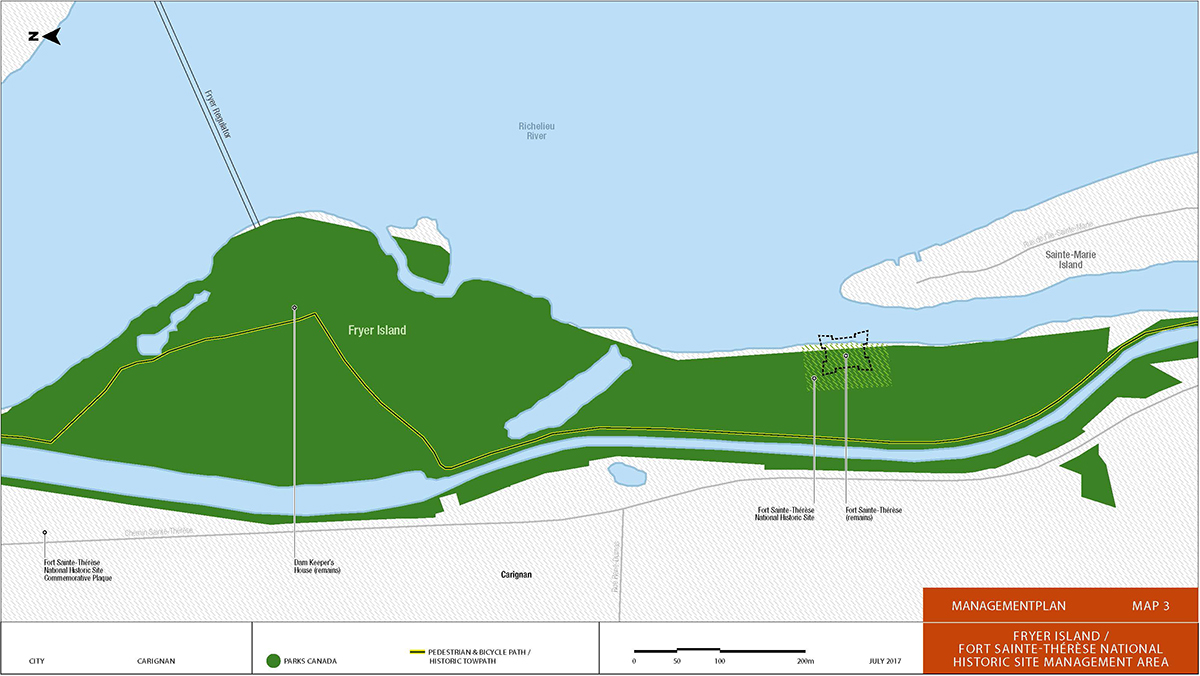
7.0 Summary of Strategic Environmental Assessment
In accordance with the Cabinet Directive on the Environmental Assessment of Policy, Plan and Program Proposals (2010), a strategic environmental assessment (SEA) was conducted on the Management Plan proposal for the Chambly Canal Historic Site, which also includes the Fort-Sainte-Thérèse National Historic Site located on Fryer Island within the boundaries of the Chambly Canal. The strategic environmental assessment is intended to integrate environmental concerns into the development of program policies, plans and proposals in order to support environmentally sound decision-making. Individual projects undertaken to implement the objectives of the Management Plan objectives of the Chambly Canal National Historic Site will be evaluated separately to determine if an impact assessment is required under the Canadian Environmental Assessment Act (2012), or successor legislation.
The scope of the assessment included the area within the boundaries of the historical site and the administered site and covered a ten-year period. In addition to the cultural resources, the environmental components worthy of mention at this site include the aquatic wildlife and its habitat as well as the shoreline and surrounding area flora of the Fort-Sainte-Thérèse National Historic Site. Many residual positive effects will occur as a result of the implementation of the plan. The biggest positive effects of this plan will be the improvement in the offers of services, activities, programs, shelters or courses in order to enhance the experience of visitors and recreational boaters. The increase in the number of visits will improve the understanding, awareness, support and appreciation of the natural and cultural resources by the public.
Some strategies, initiatives and targets identified in the management plan are likely to result in adverse environmental effects. These include the maintenance of cultural resources, marine structures and the draft depth of a navigable waterway on the one hand, and, on the other, the creation of a new service offering. The SEA has helped to identify possible environmental effects on the shoreline, water bodies and aquatic wildlife. The effects can be reduced by complying with measures to avoid serious harm to fish and by avoiding the most vulnerable periods and sites. The coaching and acquisition of knowledge from the organizations or any other interested partners in providing services on Fryer Island can also help to limit the impact. Other potential environmental effects can be mitigated by following existing guidelines and conducting impact assessments for projects. These assessments will identify the effects on the valued components and will contribute to mitigating the potential negative effects on cultural and natural resources, the visitor experience and relations with different partners.
Public participation was solicited for this management plan, which included a summary of the draft of the present SEA (November-December 2017). The concerns raised by the public were integrated into the plan.
This plan supports the objective of the Federal Sustainable Development Strategy, which consists of “Connecting Canadians with Nature”. We can assume that other measures will be considered during the development of the project or current operations.
There are no significant adverse environmental effects anticipated from the implementation of the management plan.